Windswept
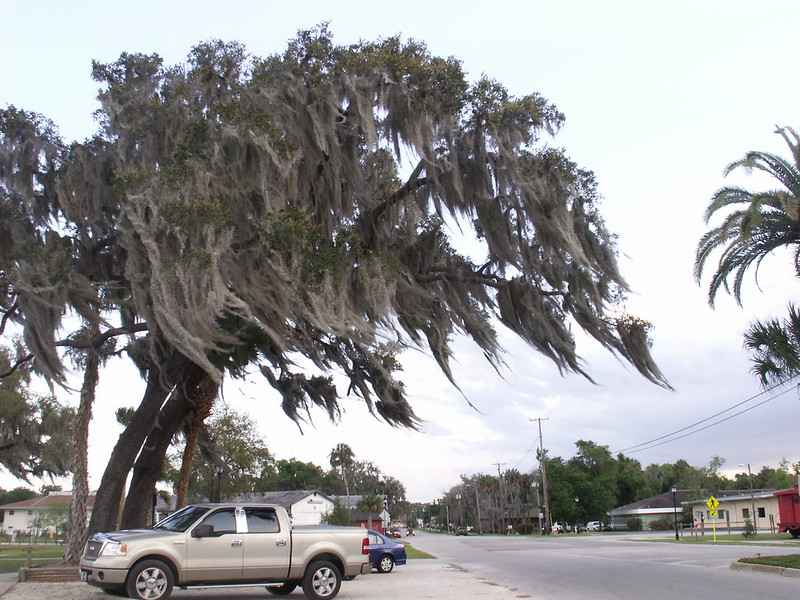
Large
Cloudy skies and rain nixed planet photos for March 21. On the plus side, Mary and I got a good daylight view of the Lake Henderson birds.
And it was windy, blowing the Spanish moss every which way. Tillandsia usneoides. Spanish moss (also called Florida moss, long moss, or graybeard) is an epiphyte (a plant that grows on another plant). This windblown tree is just outside the park beside the lake.
According to the University of Florida, "Spanish-moss does not have any roots. It uses its long, thin, scaly stems to wrap around the host tree and hang down from the branches. The leaves are covered with cup-like, permeable scales that 'catch' moisture and nutrients from the air and from pockets on the surface of the host."
First we checked out our nesting sandhill crane couple:
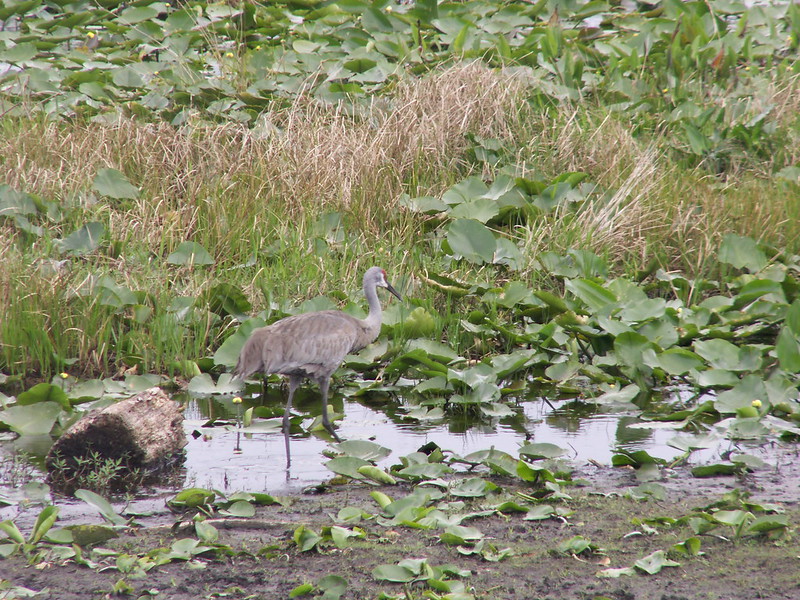
Large
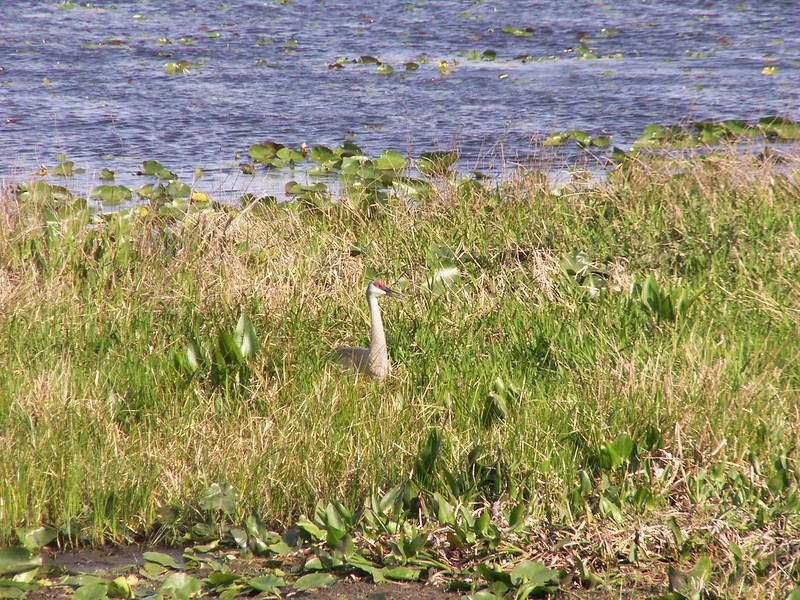
Large
Grus canadensis . According to the University of Michigan Museum of Zoology, Florida is home to non-migrating populations of sandhill cranes. Migrating populations breed farther north, but non-migrating populations remain near their nesting site year-'round. "In non-migratory populations, egg-laying can begin as early as December or as late as August."
I got decent shots of the American coots this time:

Large
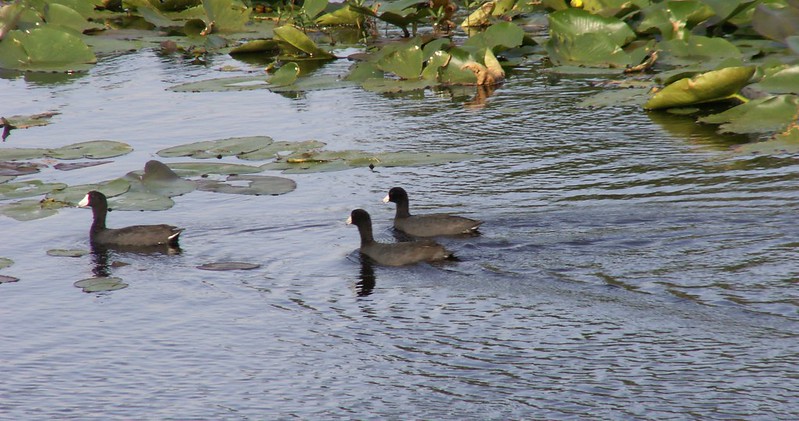
Fulica americana , Family Rallidae. Says the Cornell Lab of Ornithology, "Often mistaken for a duck, the American Coot is a common waterbird. Its all black body and white chicken-like beak distinguish this swimming rail from the real ducks."
This Great Egret also made an appearance:
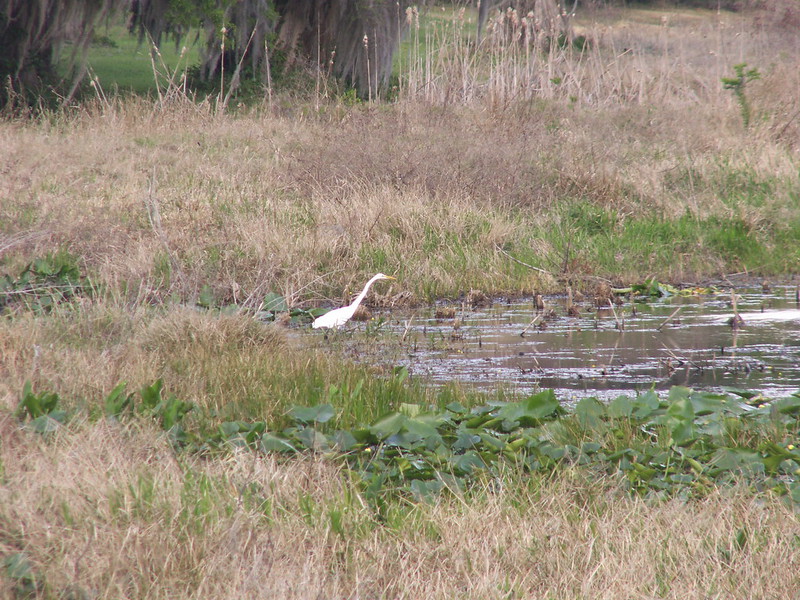
Large
It was tough to tell the species from this distance because several herons and egrets look like this. I was able to identify this as a great egret based on this line from the Peterson Field Guide to the Birds of Eastern and Central North America: "When feeding, the bird assumes an eager, forward-leaning pose, neck extended..." That behavior is visible in the shot above.

Large
Says eNature, "Much reduced (by persecution and habitat loss) compared to, say, a century ago. Nevertheless, still relatively common in wetland habitats (mainly freshwater and brackish). Resident year-round in coastal districts within its range (except in parts of West Coast), numbers boosted in winter by birds abandoning inland sites occupied from spring to fall."
I don't know what species this bird in flight is, but whatever it is, it's large:
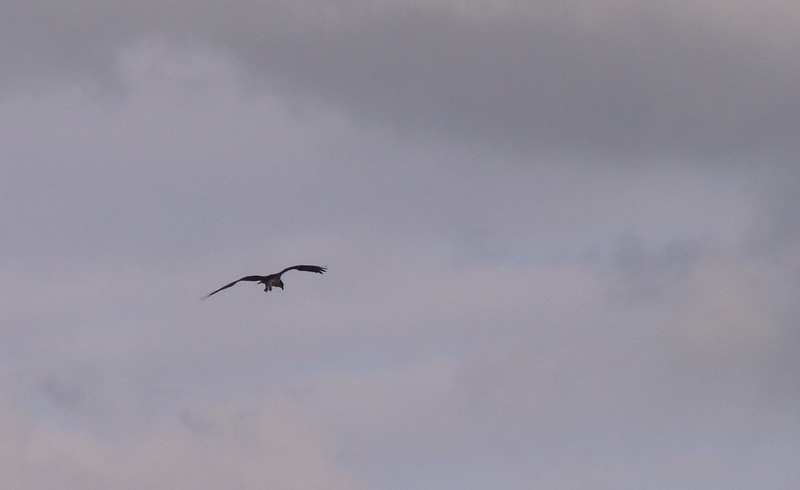
Large
I put together a video with all the birds except for the egret. I've made this one a little fancier than usual, using a combination of captions, video clips, and stills. Warning: Much loud wind noise!
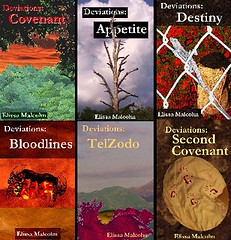











0 Comments:
Post a Comment
<< Home